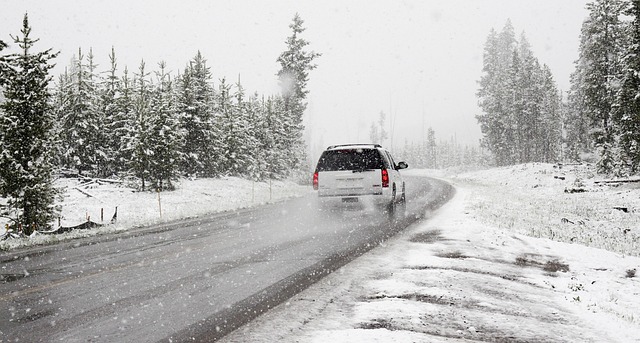Winter in Canada brings extreme cold, heavy snow, and icy roads. Preparing your car for these conditions is crucial to ensure safety, prevent breakdowns, and avoid unexpected expenses. Here’s a comprehensive checklist to get your vehicle winter-ready for Canadian roads.
1. Install Winter Tires – It’s the Law in Some Provinces
- Winter tires are mandatory in Quebec from December 1 to March 15. Even where not required, they are highly recommended for superior traction on snow and ice.
- Check your tread depth: Canadian Tire recommends at least 4 millimeters for winter driving. Use the “toonie test” to check – if the tread doesn’t cover the silver part of the toonie, it’s time for new tires.
- Monitor tire pressure: Temperatures drop, and so does your tire pressure. Check regularly to keep tires at the manufacturer-recommended PSI.
2. Test Your Battery for Cold Weather Performance
Canadian winters are brutal on batteries.
- Get a load test: Have a mechanic check if your battery holds enough charge. Most batteries last 3–5 years, but extreme cold can shorten their lifespan.
- Watch for corrosion: Clean battery terminals to maintain a strong connection.
- Consider a battery blanket: If you park outside, this can help prevent your battery from freezing overnight.
3. Switch to Winter-Grade Fluids
- Antifreeze/coolant: Ensure it’s rated for Canadian winter conditions, usually down to -40°C. A 50/50 antifreeze-water mix is standard.
- Windshield washer fluid: Use a low-temperature formula rated for at least -40°C to avoid freezing in the reservoir.
- Engine oil: In northern regions, switch to a synthetic winter-grade oil to help your engine start smoothly on cold mornings.
4. Inspect Your Wipers and Lights
Snow, ice, and freezing rain can reduce visibility on the road.
- Upgrade to winter wiper blades: These are designed to handle snow and ice buildup.
- Top off washer fluid: Keep a spare jug of winter washer fluid in the trunk.
- Check all exterior lights: Ensure your headlights, taillights, and signal lights are functioning properly. Regularly clear snow off the lights for maximum visibility.
5. Pack a Canadian Winter Survival Kit
Breakdowns are more dangerous in sub-zero temperatures. Always carry:
- Blankets, mitts, and extra winter clothing
- Ice scraper and snow brush
- Jumper cables or a portable booster pack
- Bag of sand, salt, or kitty litter (for traction)
- Tire chains or traction mats (if driving in remote or mountainous areas)
- Collapsible shovel
- Flashlight with spare batteries
- Non-perishable snacks and water
- First-aid kit
- Phone charger and power bank
6. Inspect Your Brakes and Suspension
- Brakes: Make sure your brake pads are in good condition. Ice and snow make braking harder, and you’ll need all the stopping power you can get.
- Suspension: Rough Canadian roads and potholes take a toll. Have your suspension checked to ensure it can handle winter driving conditions.
7. Rust-Proof Your Car
Salt and slush accelerate rust formation, especially in coastal or high-snow areas.
- Apply rust protection: Get an undercoating treatment to protect the frame and undercarriage.
- Wash regularly: Even during winter, wash your car to remove salt and grime. Many car washes offer heated bays with underbody sprays.
- Use all-weather floor mats: These protect your interior from salt stains and melted snow.
8. Check Your Heater and Defroster
You don’t want to discover heater problems in the middle of a snowstorm.
- Test the heater to make sure it blows hot air efficiently.
- Check the defroster: Make sure it works properly to clear frost or fog from your windshield and rear window.
9. Keep Your Fuel Tank Full
- Prevent frozen fuel lines: Avoid letting the tank drop below half-full. In extreme cold, condensation can build up and freeze in the fuel system.
- Carry extra fuel: If you’re heading into remote areas, bringing a gas can (where allowed) can be a lifesaver.
10. Get a Professional Inspection
Canadian winters expose weaknesses in any vehicle. Consider having a professional or mobile car inspector like iNeedaPPi assess your vehicle before the snow flies. They’ll check your tires, brakes, battery, and fluids to ensure your car is winter-ready.
Final Thoughts
Winterizing your vehicle is essential for surviving Canadian winters safely. From installing winter tires to packing emergency supplies, these steps will help you avoid breakdowns, stay comfortable, and handle the toughest road conditions.
Prepare early, drive safely, and enjoy the beauty of winter in Canada!



